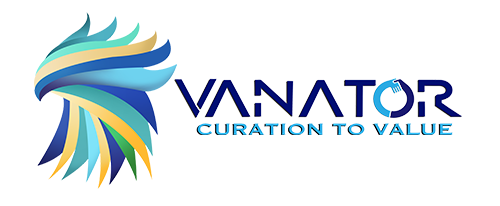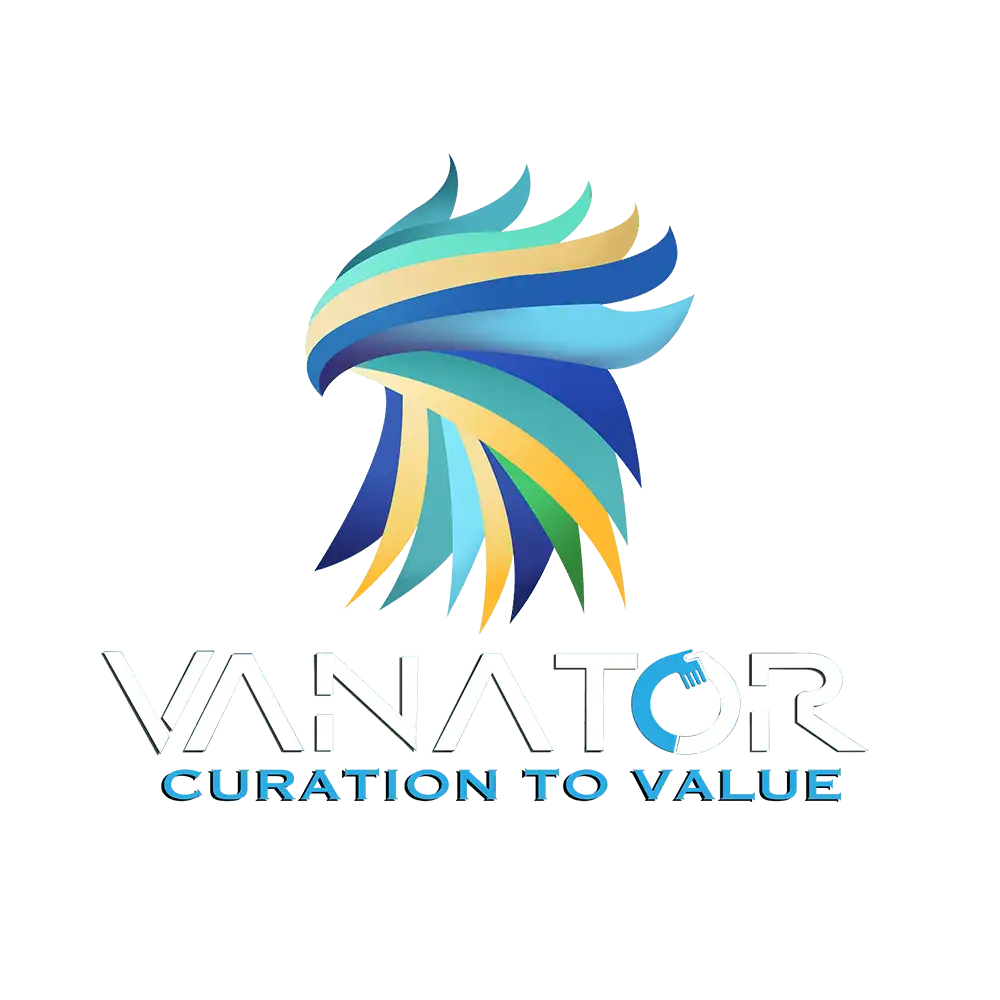IT offshore recruiting transforms team dynamics by enabling 24-hour development, accessing global skills, and optimizing costs. It requires async communication, clear ownership, robust documentation, and inclusive culture to succeed.
- Home
- Blogs
- How IT Offshore Recruiting will change your IT Team Dynamics
How IT Offshore Recruiting will change your IT Team Dynamics
IT offshore recruiting transforms team dynamics by enabling 24-hour development, accessing global skills, and optimizing costs. It requires async communication, clear ownership, robust documentation, and inclusive culture to succeed.
Key Takeaways:
What IT Offshore Recruiting Really Means
Why Offshore Recruiting, and Why Now
How Offshore Teams Reshape Team Topology
Communication, Collaboration, and Move to Async-First
Agile and DevOps Ceremonies Evolve
Time Zone Strategy: From Constraint to Advantage
Security, Compliance, and IP Protection
Culture and Leadership Dynamics
Org Design Models and Their Team Dynamics
Country and City Selection Criteria
Compensation, Benefits, and Retention
Governance, Vendor Management, and SLAs
Metrics and KPIs That Actually Matter
Common Anti-Patterns—and How to Avoid Them
Security and Access Operations in Practice
Onboarding and Knowledge Transfer
A Practical 6-Month Playbook for Standing Up Offshore Recruiting
Interviewing and Evaluation Across Borders
Documentation: Your New Superpower
How Team Dynamics Evolve Over Time
Budgeting and Total Cost of Ownership
Case Scenarios to Illustrate Dynamics
Change Management: Bring People With You
Tooling That Makes It All Work
When Offshore Recruiting Isn’t the Right Fit

Introduction
If you’re considering IT offshore recruiting, you’re not just changing a hiring channel—you’re changing how your technology organization thinks, collaborates, and ships software. Offshore recruiting reshapes team structures, communication patterns, accountability, and even the rhythm of your product roadmap. Done well, it becomes a force multiplier: faster delivery, 24-hour development cycles, access to specialized skills, resilience against hiring bottlenecks, and a broader leadership bench. Done poorly, it can fragment ownership, create “us vs. them” dynamics, and slow you down with coordination overhead.
This guide is written for leaders evaluating offshore recruiting as a strategic capability. We’ll explore how offshore talent changes your team dynamics, what to expect across engineering, product, and operations, and how to design a model that amplifies your culture rather than diluting it.

What IT Offshore Recruiting Really Means
Offshore recruiting is the process of building your own distributed team members in countries different from your company’s primary location, typically through one or more of the following models:
- Employer of record (EOR): You recruit and manage talent; a third party employs them locally for compliance and payroll.
- Own legal entity: You set up a subsidiary and employ directly, often after a pilot.
- Build-operate-transfer (BOT): A partner builds and runs the team initially, then transfers it to you.
- Dedicated team via a partner: A partner recruits and manages a team aligned to you; you co-manage day-to-day work.
- Staff augmentation: Individual offshore engineers embedded in your teams through a vendor.
While outsourcing focuses on handing off outcomes to a vendor, offshore recruiting is about expanding your own team’s capacity and capabilities across borders. That difference will drive many of the dynamics you experience.

Why Offshore Recruiting, and Why Now
- Access to scarce skills: AI/ML, security, mobile, data engineering, DevOps/SRE, Salesforce, ERP—many of these skills are globally distributed.
- Scale without hiring bottlenecks: Diversify your pipelines and accelerate the time-to-fill for critical roles.
- Leverage time zones: Move toward continuous development and support through follow-the-sun models.
- Cost optimization without trading quality: Shift from budget-constrained hiring to value-optimized team design.
- Business continuity: Reduce key-person risk and create redundancy across geographies.
- Market insights: Offshore hubs introduce local knowledge, language skills, and regional customer understanding.
The upside is real. The change is real, too. Offshore recruiting changes not just “who” is on your team but “how” your team works.

How Offshore Teams Reshape Team Topology
Expect to re-think your org design. Distributed teams thrive when responsibilities are modular, boundaries are explicit, and handoffs are engineered—not improvised.
Common topology shifts:
- From monolith to modular: Teams align to services or capabilities rather than layers. Clear APIs and contracts reduce cross-timezone dependencies.
- Stream-aligned squads: Offshored roles map to end-to-end product streams rather than “offshore = QA only.” This reduces silos and builds shared ownership.
- Platform and enablement teams: Offshore platform teams can harden tooling, CI/CD, developer experience, and shared libraries that benefit everyone.
- Internal open-source model: Code ownership is broadened. Contributions flow across teams under maintainers with published contribution guides.
- Follow-the-sun handoffs: Product, design, and engineering jointly define handoff artifacts—work items have everything needed to keep moving during off hours.
What this changes in dynamics:
- Responsibility clarity becomes non-negotiable. RACI matrices and team charters shift from “nice-to-have” to daily-operational.
- Architectural decisions are documented. Architecture decision records (ADRs) and design docs become the lingua franca across time zones.
- Reduced reliance on ad-hoc heroism. Processes and tooling replace hallway conversations.

Communication, Collaboration, and Move to Async-First
Distribution introduces latency and ambiguity unless you actively counter it. You’ll move from a meetings-first culture to a documentation-and-async-first culture.
Key changes:
- Docs and artifacts become the source of truth: Confluence/Notion pages, RFCs, runbooks, and architectural diagrams are expected deliverables, not sidework.
- Async channels dominate: Written updates, recorded demos, and decision logs enable progress without calendar constraints.
- Meetings are shorter, fewer, and more intentional: Defined agendas, pre-reads, and decisions captured in writing.
- Communication SLAs: Teams agree on response windows for critical channels (e.g., Slack incidents in 15 minutes, PR reviews in 24 hours).
- Clear language and context: Avoid idioms and assumptions. Summaries and action items at the end of messages become standard.
Practical practices:
- Weekly written status updates per squad covering goals, progress, risks, and next steps.
- Design reviews in asynchronous threads, with a synchronous call only for unresolved concerns.
- Standardized PR templates, coding guidelines, and testing expectations.
- “Golden hour” overlaps: 2–4 hours of predictable cross-timezone overlap for critical collaboration.

Agile and DevOps Ceremonies Evolve
Your ceremonies will change shape to balance synchronous alignment with asynchronous execution.
- Stand-ups: Replace daily 30-minute calls with a 2–3 times weekly sync plus daily async check-ins. Use a bot or structured update format.
- Backlog refinement: Run asynchronously with clear acceptance criteria, design notes, and dependency flags. Use synchronous sessions to resolve blockers.
- Sprint planning: Time it to include both onshore and offshore participants, even if you rotate times to distribute inconvenience fairly.
- Retrospectives: Async surveys for input; a shorter live session to discuss top themes. Rotate facilitators across geographies to build psychological safety.
- Demos: Record and share; hold a monthly live, all-hands showcase to celebrate outcomes and cross-pollinate knowledge.
DevOps workflow changes:
- Code review windows: Ensure reviewers exist in every major timezone to keep velocity high.
- CI/CD hardening: Flaky tests or fragile pipelines slow down distributed teams more than colocated ones. Invest here early.
- On-call rotations: Distribute on-call by timezone to reduce burnout and speed recovery. Publish runbooks and escalation paths.

Time Zone Strategy: From Constraint to Advantage
Think deliberately about your time zone posture. There are three patterns that drive different dynamics:
- High-overlap model (nearby zones): Easier collaboration, more synchronous work. Good for high-ambiguity product phases.
- Hybrid model (partial overlap): Maintain a 2–4 hour window for coordination while leveraging extended coverage for support and releases.
- Follow-the-sun model (large separation): Maximize 24-hour progress via structured handoffs. Great for mature pipelines, SRE, and well-defined work.
Operational tips:
- Map your “golden hours” and protect them. Block calendars for recurring cross-geo sessions.
- Create handoff checklists: What context and artifacts are required to pick up a story seamlessly?
- Record critical meetings; share summaries and decisions with action owners and deadlines.
- Avoid “ping and wait” culture. Provide full context, links, logs, and hypotheses when asking for help.
Quality Engineering and Reliability Improve—If You Plan For It
Distributed teams can raise quality if you bake it into the operating model.
- Shift-left testing: Offshore engineers own unit, integration, and contract tests; QA focuses on exploratory and non-functional testing.
- Test environments: Stable, on-demand environments are essential. Use pre-seeded datasets and environment configs that are reproducible.
- Definition of Done: Includes documentation, tests, monitoring hooks, and rollout plans. Publish examples of “good” PRs and stories.
- Observability: Dashboards, logs, traces, SLOs and error budgets accessible to all locations. This reduces back-and-forth during incidents.
- Release discipline: Feature flags and progressive delivery let teams ship safely across time zones. Rollback playbooks reduce stress and finger-pointing.

Security, Compliance, and IP Protection
Offshore recruiting introduces new security and compliance surfaces. Address them upfront to avoid retrofitting under pressure.
- Device and identity: Enforce MDM, SSO, MFA, and least-privilege access. Provision devices through compliant vendors or virtual desktops for sensitive data.
- Data governance: Define data residency, PII handling, and access controls by region and role.
- Network and secrets: VPN or ZTNA for network access; managed secrets and short-lived credentials.
- Code and IP: Clear invention assignment and confidentiality agreements through EOR or local entities. Centralized code repositories and audit logs.
- Vendor risk management: Evaluate EOR and partner security practices; assign an owner for ongoing oversight.
- Compliance by design: If applicable, align controls with your frameworks (e.g., SOC 2, ISO 27001) from day one rather than after a customer audit.

Culture and Leadership Dynamics
Offshore recruiting will test and ultimately strengthen your culture—if you invest.
- One team, not tiers: Avoid treating offshore members as a support function. Integrate them into squads, decision-making, and demos.
- Rotate leadership: Tech leads, project leads, and facilitators should rotate across geographies. Build a real leadership pipeline offshore.
- Psychological safety: Encourage questions and dissent. Cultural differences can mask disagreement; explicit invitations matter.
- Recognition equity: Celebrate wins across time zones. Ensure eligibility for promotions, bonuses, and high-visibility projects is equal.
- Mentorship and pairing: Cross-geo pairing sessions and mentorship programs accelerate ramp-up and retention.
Rituals that help:
- Monthly virtual town halls with candid Q&A.
- Engineering guilds and communities of practice for shared concerns.
- Quarterly virtual hackathons with mixed-geo teams.
- Regular skip-levels by senior leaders with offshore talent.
Product Management and UX: Bridging Customer Context
The biggest risk in distribution is loss of customer context. Counter it directly.
- Embedded product roles: Either co-locate PMs with offshore squads or assign dedicated product partners with defined overlap hours.
- Context packs: For each epic, include personas, user journeys, analytics insights, and customer quotes. Build a habit of sharing user research recordings.
- Backlog clarity: Invest in strong acceptance criteria, visual mocks, and decision rationales. Capture trade-offs in writing.
- Beta feedback loop: Create a predictable loop from launch to feedback to iteration that doesn’t require late-night meetings.
Done well, offshore teams become closer to regional users, enabling better localization, compliance awareness, and usability feedback for those markets.

Org Design Models and Their Team Dynamics
Your operating model will shape behavior. Choose intentionally.
- Staff augmentation
- Pros: Fast start, flexible.
- Dynamics: Risk of split loyalty and uneven standards unless deeply integrated with your processes and culture.
- Dedicated team via partner
- Pros: Managed staffing, cohesive unit.
- Dynamics: Can be high-performing with a tight charter; ensure transparency and avoid “black box” development.
- EOR hires
- Pros: You control hiring and management; partner handles compliance.
- Dynamics: Most “your team” feel; requires strong internal HR/IT processes across borders.
- BOT
- Pros: Rapid scale with eventual full control.
- Dynamics: Plan the transfer early; align tooling, culture, and compensation from day one to prevent shock at handover.
- Your own entity
- Pros: Highest control and cultural alignment.
- Dynamics: Best for long-term scale; heavier initial legal and operational lift.
Hybrid models are common: start with EOR or a dedicated team, prove value, then evolve to BOT or your own entity for strategic hubs.

Country and City Selection Criteria
Rather than chasing the “hot” market, use a rubric aligned to your needs.
- Talent depth: Volume and seniority of skills you require (e.g., data, mobile, ERP).
- Language and communication: Proficiency in your working language; cultural compatibility with your customers and team.
- Time zone alignment: Desired overlap for your collaboration model.
- Stability and risk: Political, legal, economic stability; IP enforcement.
- Cost and compensation norms: Total compensation, benefits, and expected progression.
- University pipelines and ecosystem: Conferences, meetups, open-source activity, and local partners.
- Infrastructure: Internet reliability, power stability, and modern office facilities if you plan hybrid work.
Pilot with a small team before committing to a hub. Validate hiring velocity, retention, and collaboration quality.

Compensation, Benefits, and Retention
Offshore does not mean underpay. It means pay fairly for the market and your bar.
- Market-aligned salary bands: Calibrated to seniority and role, with periodic reviews to stay competitive.
- Benefits parity in spirit: Health, leave, learning budgets, and bonuses comparable in value to onshore peers.
- Equity and incentives: If you offer equity onshore, provide equitable incentives offshore. Align performance bonuses to outcomes.
- Career paths: Publish a single global career framework with localized examples. Promotions should be possible without relocation.
- Manager effectiveness: Train managers on cross-cultural feedback, recognition, and coaching.
Retention levers:
- Meaningful work with ownership, not just maintenance.
- Growth opportunities, mentorship, and conference participation.
- Clear performance expectations and fair evaluation cycles.
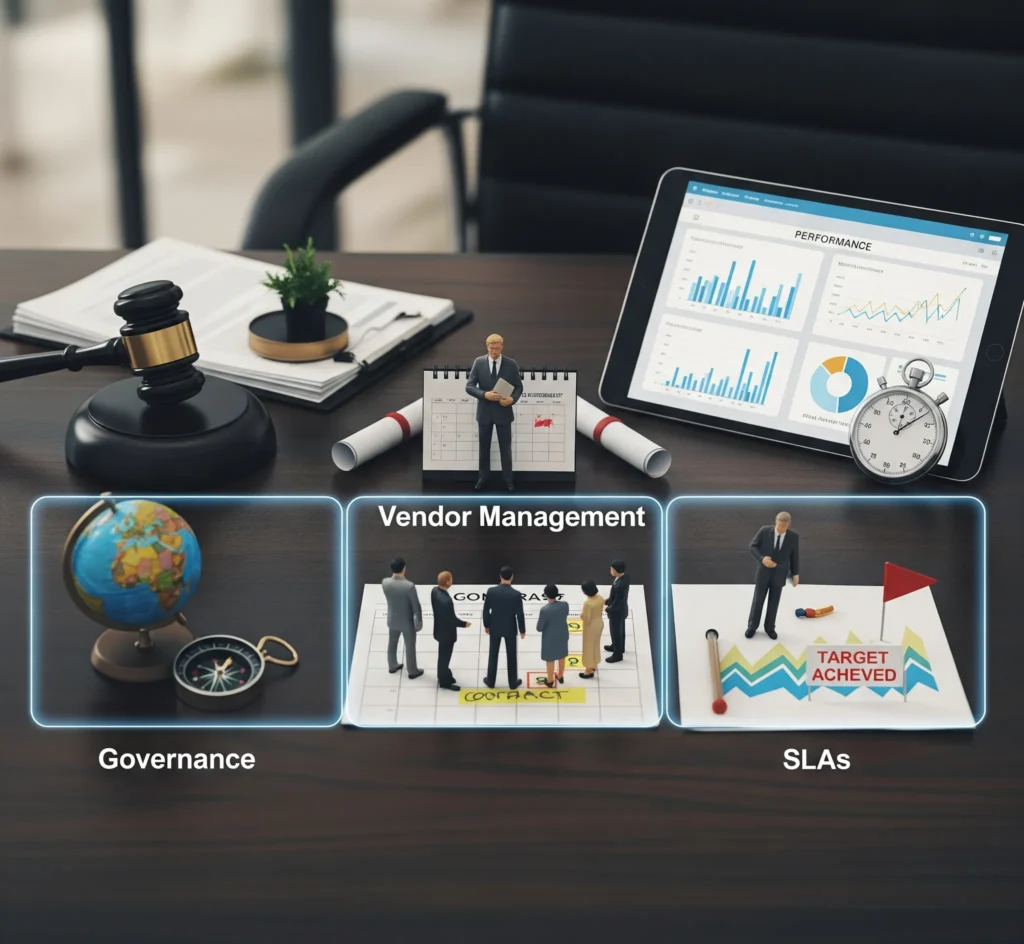
Governance, Vendor Management, and SLAs
If you work with partners, formalize governance without suffocating agility.
- Joint steering committee: Quarterly or monthly reviews on outcomes, quality, and satisfaction.
- Shared KPIs: Quality metrics, delivery predictability, security posture, and attrition.
- Transparent staffing: Visibility into team composition, tenure, and succession plans.
- Exit and continuity clauses: Protect delivery continuity if the relationship changes.
- Tooling alignment: Use your repos, CI/CD, and ticketing where possible to reduce friction and shadow IT.
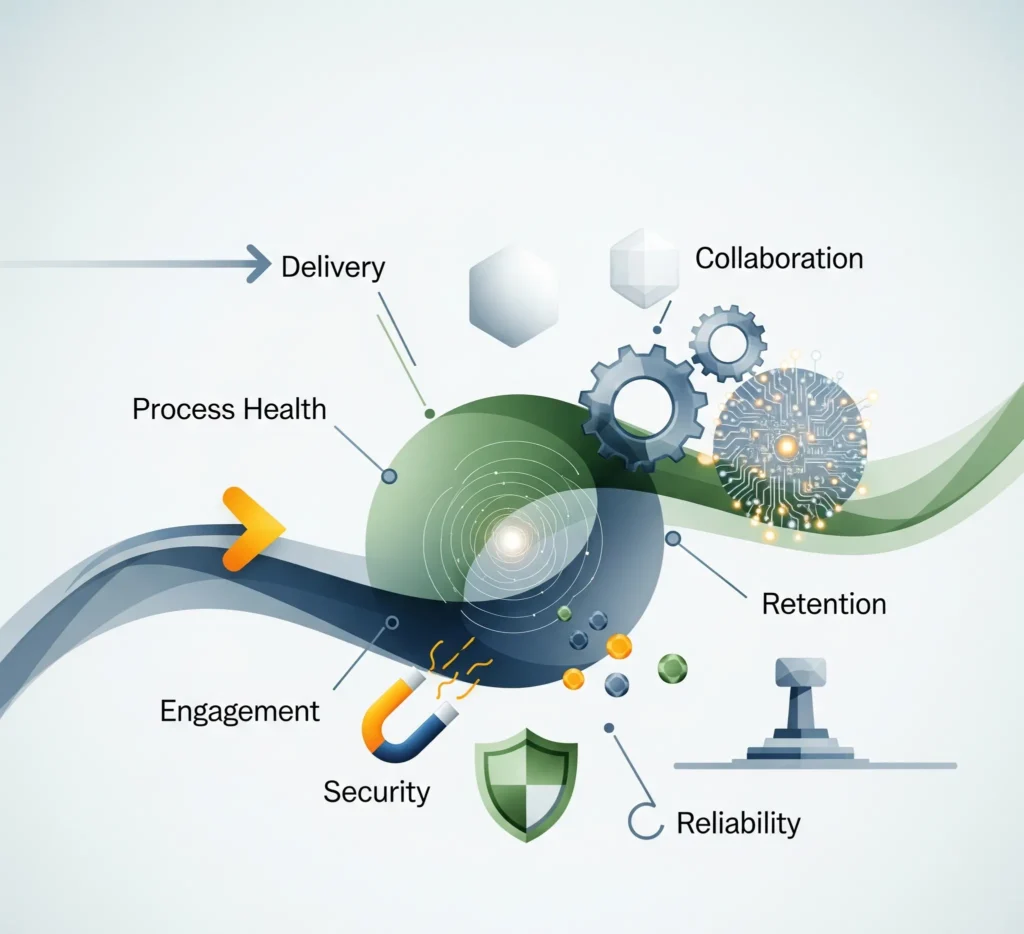
Metrics and KPIs That Actually Matter
Measure what influences outcomes and culture—not vanity metrics.
Delivery and quality:
- Lead time for changes
- Deployment frequency
- Change failure rate
- Mean time to recovery
- Defect escape rate
Collaboration and process health:
- PR review time and cycle time by team and timezone
- Percentage of stories with full acceptance criteria and tests
- Meeting-to-maker-time ratio
Engagement and retention:
- eNPS or engagement pulse
- Voluntary attrition and regrettable loss
- Internal mobility and promotions by geography
Security and reliability:
- Time-to-patch critical vulnerabilities
- On-call load and incident distribution
- Access reviews completed on time.
Use metrics for learning, not punishment. Publish trends and celebrate improvements.
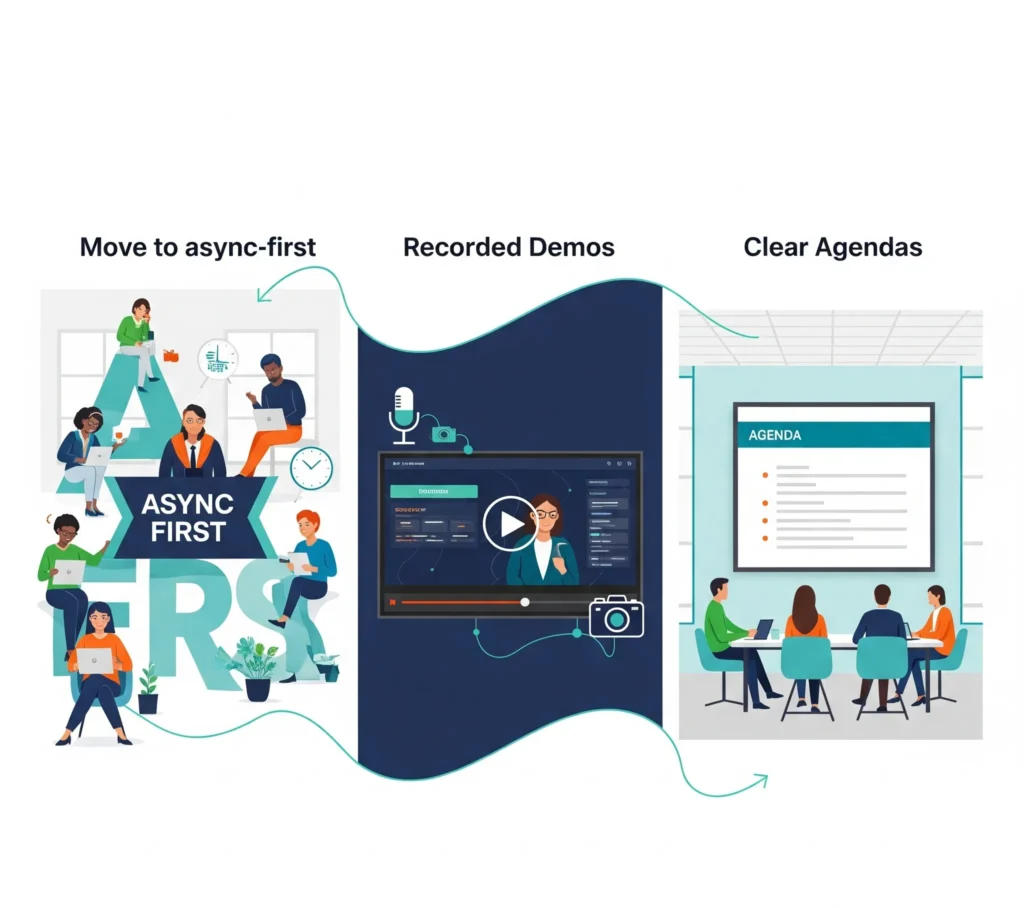
Common Anti-Patterns—and How to Avoid Them
- Throwing work over the wall : Replace with end-to-end squads and shared Definition of Done.
- “Us vs. them” tiers: Integrate teams, rotate leadership, and standardize benefits in spirit.
- Meeting sprawl: Move to async-first, recorded demos, and clear agendas.
- Vague ownership: Publish RACI and team charters. Clarify service ownership and on-call rotations.
- Over-rotating to cost: Hire for excellence; avoid creating a two-tier codebase or tech debt sink.
- Hidden dependencies: Invest in architecture, API contracts, and internal documentation.
- Manager bandwidth issues: Reduce span of control for distributed teams and invest in enablement roles.
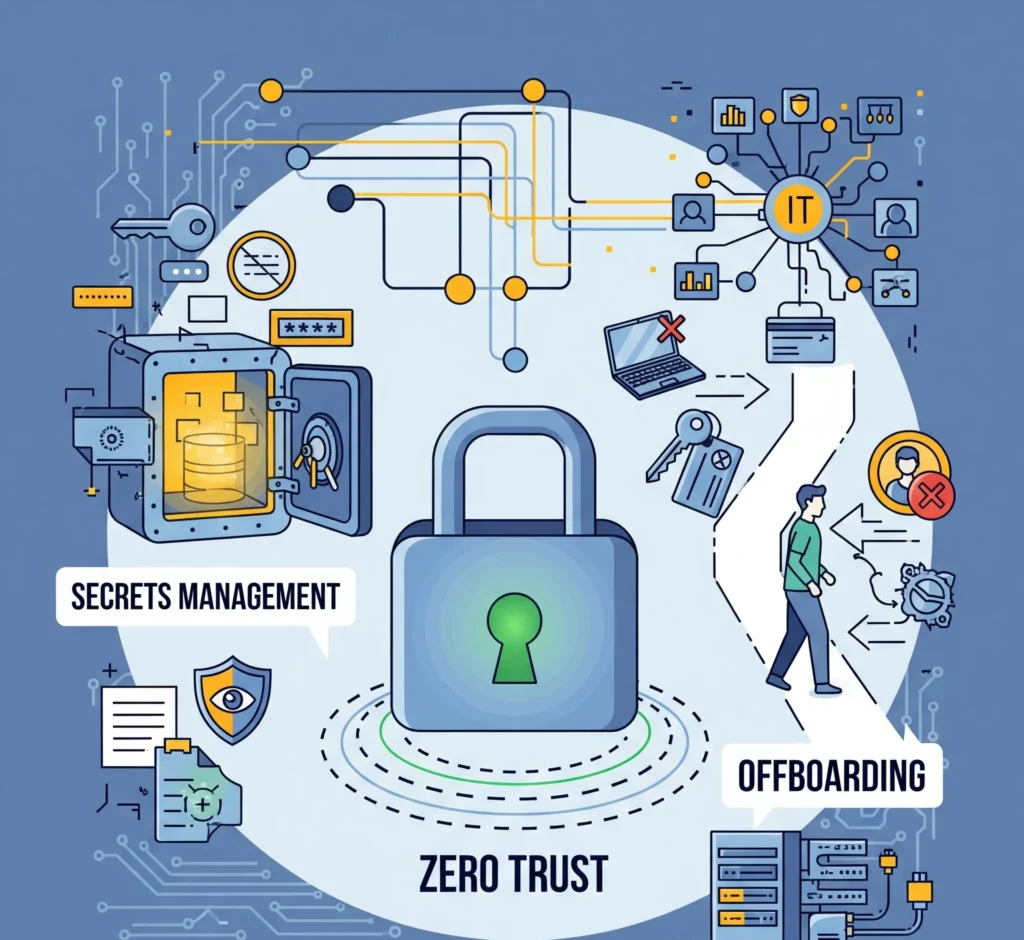
Security and Access Operations in Practice
- Zero trust posture: Device compliance and identity checks before granting access; time-bound permissions for sensitive systems.
- Environment strategy: Local dev containers and remote dev environments for consistent setups.
- Secrets and keys: Centralized secrets management with rotation policies and auditability.
- Third-party tools: Standardize tooling; pre-approve and provision licenses instead of ad hoc signups.
- Offboarding: Automated access revocation across systems; asset return or remote wipe procedures.

Onboarding and Knowledge Transfer
Your first 90 days with offshore recruits set the tone.
Pre-boarding:
- Ship or provision devices, accounts, and tool access before day one.
- Send a “Welcome Pack”: team charter, architecture overview, coding standards, and a 30-60-90 plan.
First 30 days:
- Assign a buddy and a mentor; schedule regular 1:1s.
- Shadowing plan: design reviews, on-call, and cross-team meetings.
- First contribution within week one: a small PR, a doc improvement, or a test.
Days 31–60:
- Ownership: a small feature or service component with clear acceptance criteria.
- Knowledge capture: new hires document learnings and gaps for future onboarding.
Days 61–90:
- Lead a demo or drive a small RFC.
- Participate in an on-call rotation with supervision.
- Feedback loop: retro on onboarding process and incorporate improvements.
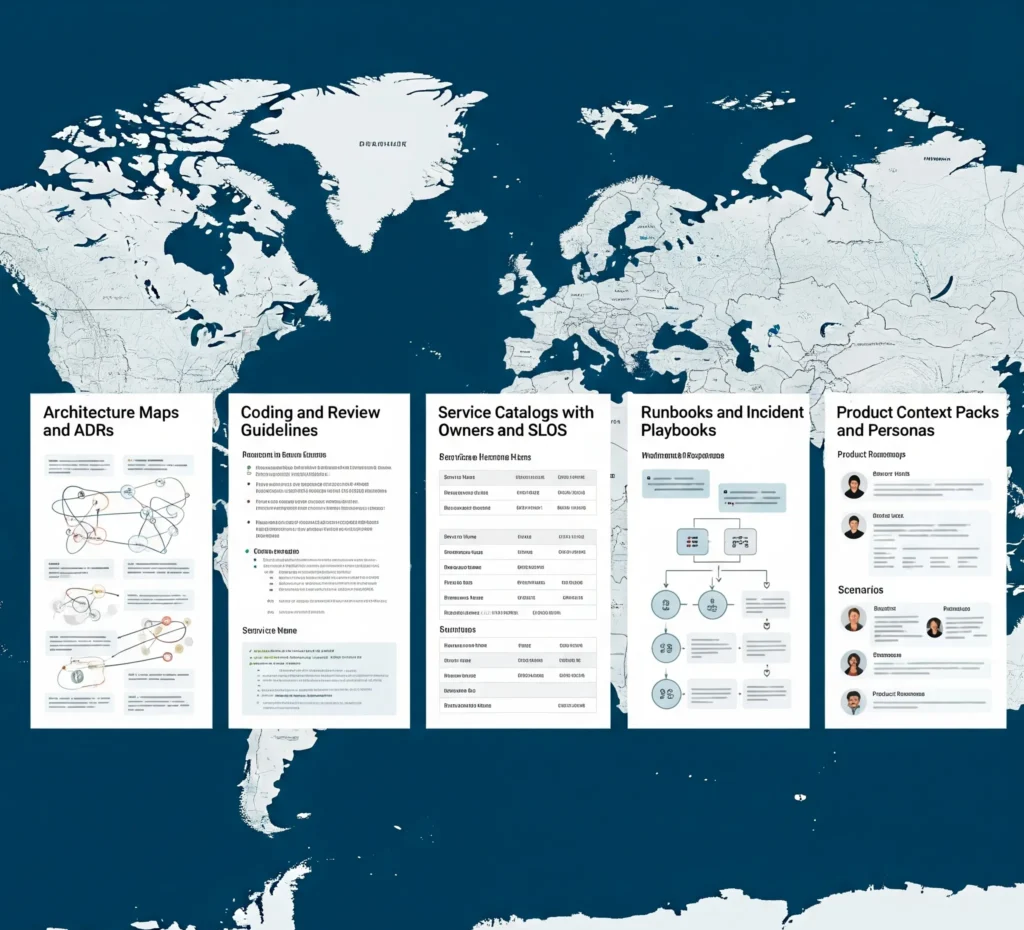
Artifacts that matter:
- Architecture maps and ADRs
- Coding and review guidelines
- Service catalogs with owners and SLOs
- Runbooks and incident playbooks
- Product context packs and personas
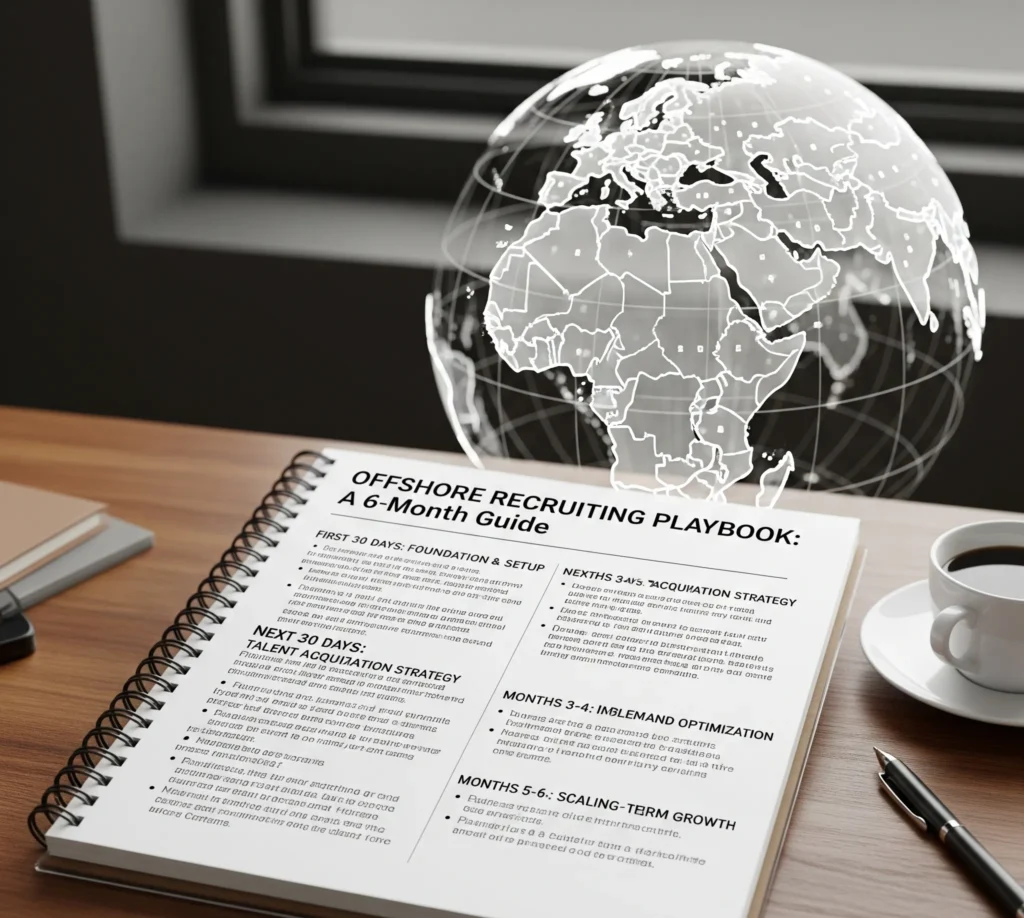
A Practical 6-Month Playbook for Standing Up Offshore Recruiting
Month 0–1: Strategy and design
- Define goals: capacity, skills, cost, support coverage, or market insights.
- Choose model(s): EOR, partner, BOT, or own entity.
- Select countries: apply your rubric; shortlist 1–2 primary hubs.
- Design team topology: stream-aligned squads, platform teams, or both.
- Identify tool stack and security controls; align with compliance.
Month 2–3: Hiring and foundations
- Create localized JDs and salary bands; calibrate your interview loop for global candidates.
- Train interviewers on cross-cultural assessment and bias mitigation.
- Stand up onboarding assets, dev environments, and documentation templates.
- Pilot hire: start with a senior engineer or tech lead plus 2–4 ICs.
Month 4: Integration and delivery
- Launch mixed-geo squads with a clear backlog and Definition of Done.
- Establish ceremonies, SLAs for PR reviews, and overlap windows.
- Start tracking baseline metrics.
Month 5: Scale and stabilize
- Expand hiring based on early performance and culture fit.
- Formalize leadership development and mentorship in the offshore hub.
- Conduct your first joint retro on the operating model across geos.
Month 6: Optimize and institutionalize
- Adjust topology, ownership, and handoffs based on data.
- Introduce internal open-source practices, guilds, and platform improvements.
- Review compensation, benefits, and engagement; tune for retention.

Interviewing and Evaluation Across Borders
- Bar consistency: The hiring bar remains the same, but signals may vary by education or portfolio norms. Align rubrics and scorecards.
- Practical assessments: Use work-sample tasks and structured take-homes; avoid puzzles that reward test prep over engineering judgment.
- Communication assessment: Evaluate clarity, documentation quality, and async collaboration signals.
- Team fit: Include cross-geo interviewers; look for ownership mindset and curiosity about your domain.
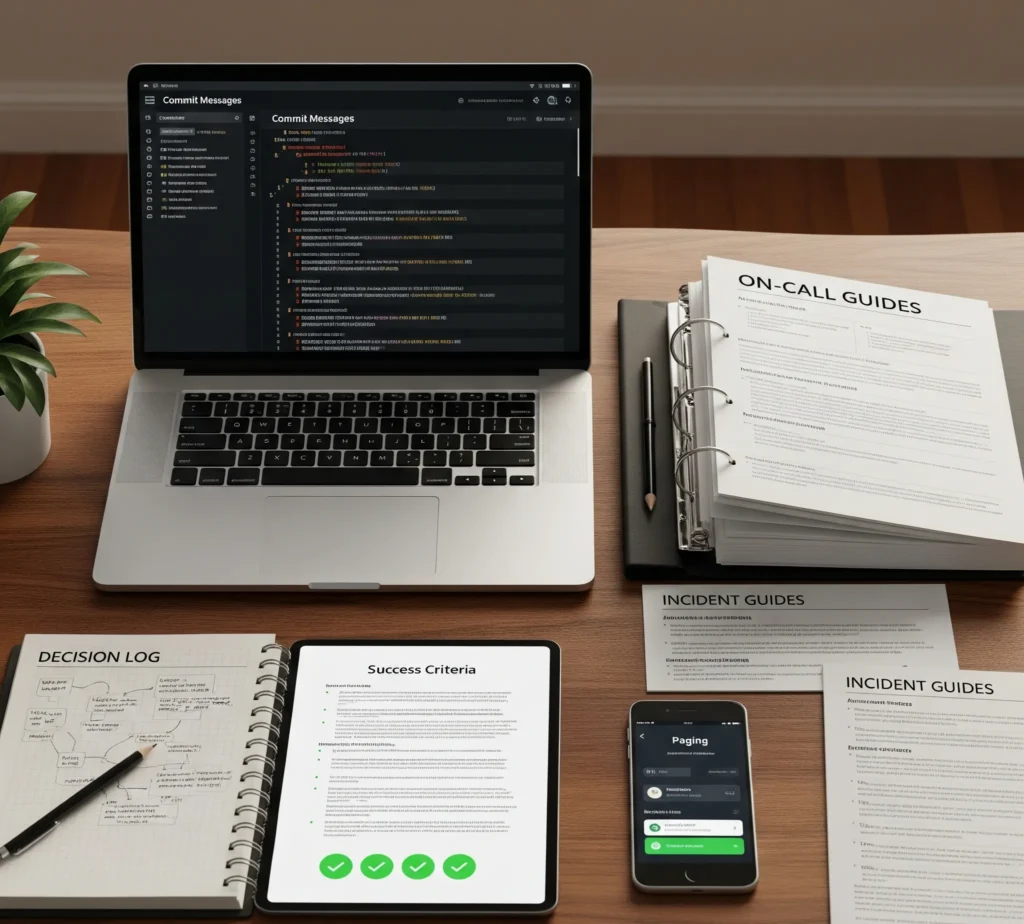
Documentation: Your New Superpower
- Think of documentation as an accelerator, not overhead.
- Decision logs and ADRs: Short, discoverable, and searchable.
- Service catalogs: Owner, purpose, dependencies, SLOs, and last review date.
- Contribution guides: Branching strategy, commit messages, PR templates, testing expectations.
- On-call and incident guides: Templated blameless postmortems with action items and owners.
- Product wikis: Vision, metrics dashboard links, personas, journeys, and success criteria.
Documentation quality is a direct predictor of distributed team performance. Make it part of the Definition of Done and performance expectations.

How Team Dynamics Evolve Over Time
Stage 1: Formation
- High coordination overhead; leaders are hands-on.
- Early wins build credibility; documentation gaps are exposed quickly.
Stage 2: Norming
- Async routines solidify; fewer urgent meetings.
- Ownership boundaries become clearer; velocity stabilizes.
Stage 3: Performing
- Follow-the-sun cycles compound productivity.
- Cross-geo leadership emerges; internal open-source model spreads.
- Teams self-serve more context; onboarding gets smoother.
Stage 4: Scaling
- Multiple hubs; platform teams mature.
- Succession plans and leadership development create resilience.
- The organization treats location as a property, not an identity.
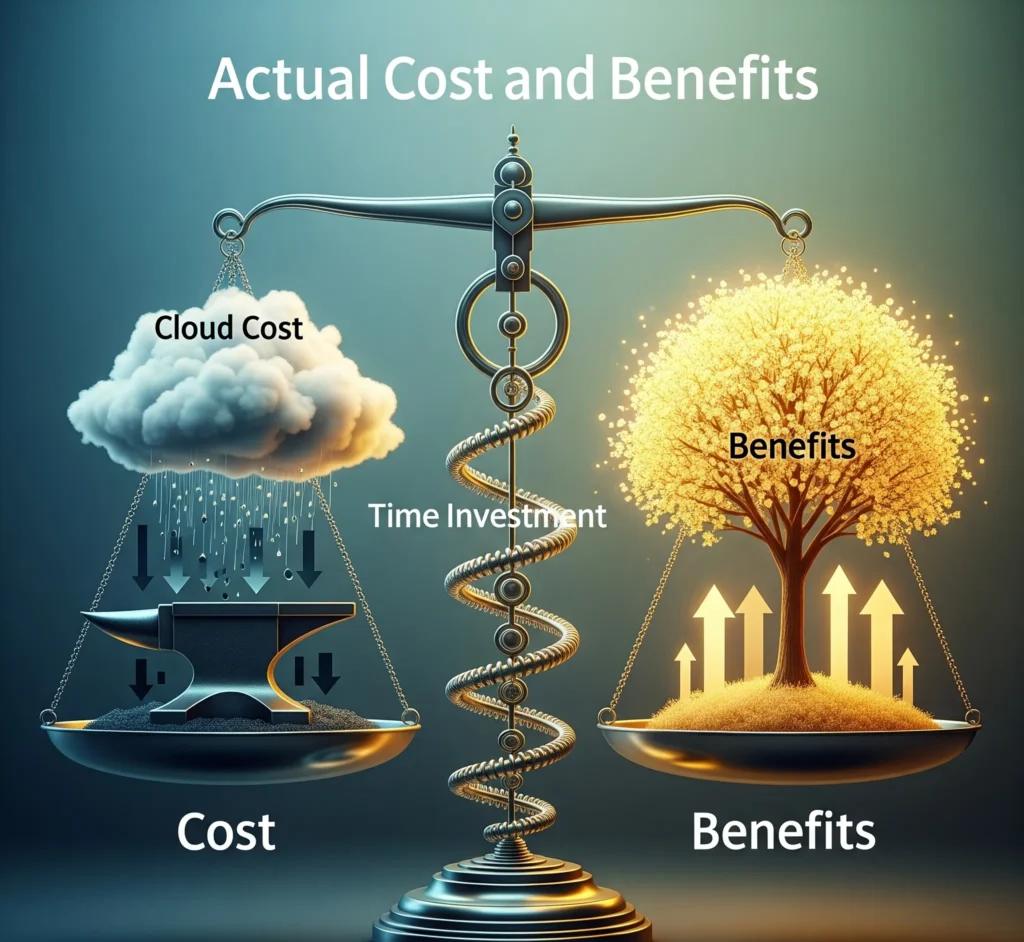
Budgeting and Total Cost of Ownership
- Be clear-eyed about actual costs.
- Direct compensation and benefits
- Recruiter or partner fees, EOR fees, or entity setup/admin costs
- Equipment, licenses, and cloud costs
- Travel for leadership visits and team offsites
- Time investment for onboarding, documentation, and process design
Savings often come from reduced time-to-fill, broader hiring reach, and productivity gains from follow-the-sun and platform improvements—not just salary arbitrage. Track TCO against value delivered, not just headcount costs.

Case Scenarios to Illustrate Dynamics
Scenario A: Startup accelerating product-market fit
- Problem: Onshore hiring too slow; mobile and backend skills scarce.
- Approach: EOR hires in one hub with 3–4 hour overlap. Mixed-geo squad owns a high-priority feature set.
- Dynamics: Stand-ups move async; designers share video walkthroughs; product runs two weekly overlap sessions.
- Outcome: Reduction in cycle time; faster experimentation; durable docs culture emerges early.
Scenario B: Mid-market SaaS hardening reliability
- Problem: Incident recovery too slow; on-call burnout.
- Approach: Establish offshore SRE team with clear SLOs; distributed on-call; unified runbooks.
- Dynamics: Handoffs formalized; observability dashboards shared; incident reviews occur in golden hours.
- Outcome: Lower MTTR, improved sleep for onshore engineers, and better reliability without slowing delivery.
Scenario C: Enterprise modernizing a legacy platform
- Problem: Monolith and siloed teams; offshore historically limited to QA.
- Approach: Introduce service slicing and platform team offshore; adopt internal open-source; expand offshore into full-stack roles.
- Dynamics: Ownership shared across geos; PR guidelines and ADRs enforced; cultural reset to one-team.
- Outcome: Reduced release risk, higher morale offshore, and true velocity gains as dependencies shrink.
Change Management: Bring People With You
- Stakeholder map: Identify executive sponsors, skeptical managers, and frontline influencers.
- Communication plan: Explain the why, the model, and the impact on day-to-day work.
- Training: Async collaboration, inclusive facilitation, security practices, and cross-cultural communication.
- Feedback loops: Office hours, anonymous channels, and quarterly pulse surveys to surface friction.
- Visible wins: Share successes and lessons, not just directives.

Legal and HR Considerations
- Contracts and IP: Ensure enforceable assignment of inventions and confidentiality under local law.
- Working hours and leave: Align with local labor laws; harmonize policies to avoid inequity.
- Holidays and coverage: Plan product and release calendars with global holidays in mind.
- Terminations and disputes: Understand notice periods and legal requirements; partner with local expertise.
- Ethics and fairness: Avoid creating a second-class citizen experience; align policies to values.
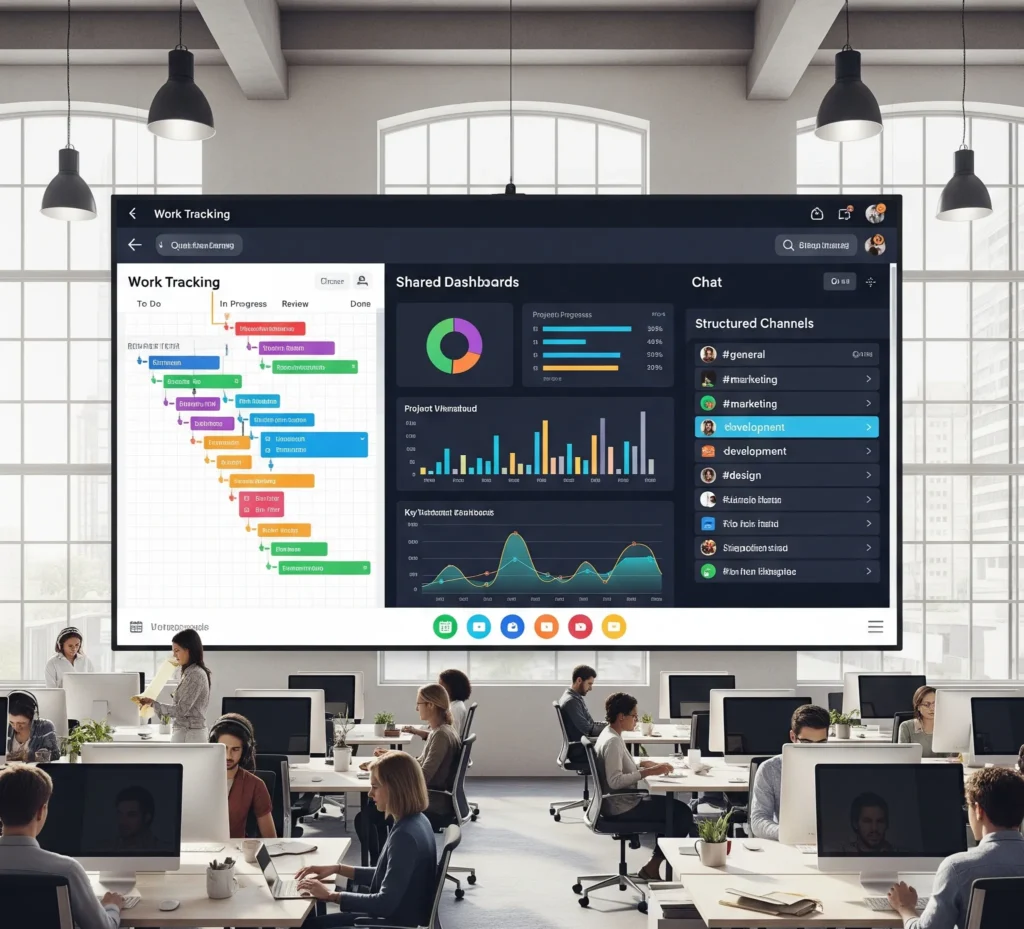
Tooling That Makes It All Work
- Source control and CI/CD: Standardize on a single platform across geos.
- Work tracking: One backlog per squad; clear states and definitions.
- Communication: Chat with structured channels; video calls with recording; scheduled messages for time zones.
- Knowledge base: Organized, searchable, with ownership and review cadences.
- Observability: Shared dashboards, alerts aligned to on-call schedules.
- Access management: Central identity, device compliance, and automated provisioning/deprovisioning.
Adopt automation over manual heroics. Consistency beats novelty in distributed contexts.

When Offshore Recruiting Isn’t the Right Fit
- Highly sensitive data without a mature security posture
- Product in discovery where constant high-bandwidth collaboration is required and you lack overlap
- Leadership bandwidth too constrained to invest in process, documentation, and coaching
- No willingness to re-architect monoliths or clarify ownership.
In these cases, consider nearshore for more overlap, a smaller pilot, or delay until foundational maturity improves.
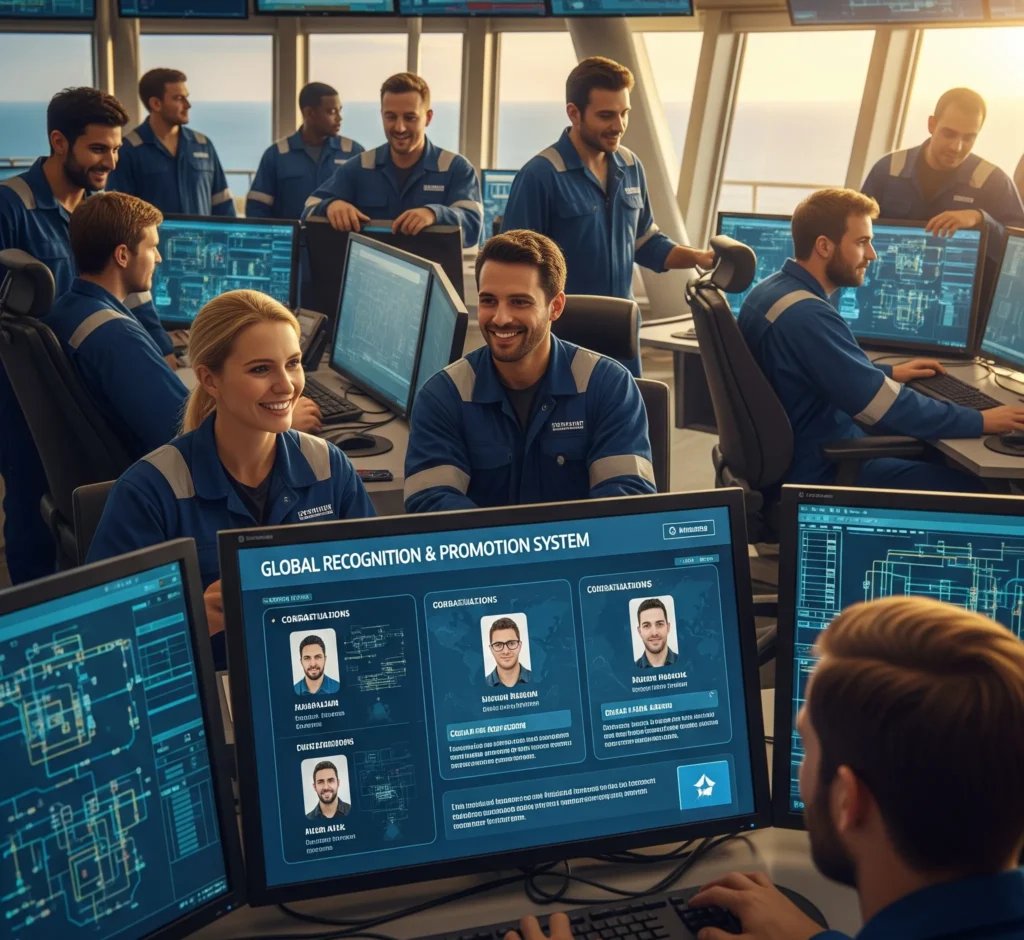
What Success Looks Like
- Work flows, not stalls: Stories move across time zones without meetings.
- Shared ownership: Offshore engineers own features, services, and incidents—not just tasks.
- Documented clarity: New joiners can contribute in week one using docs and templates.
- Stable velocity: Fewer emergencies, predictable delivery, and steady improvements in DORA metrics.
- Strong culture: People feel recognized, promoted, and trusted regardless of location.

A Concise Checklist to Get Started
- Define your goals and select a model (EOR, partner, BOT, entity).
- Choose 1–2 hubs with a rubric aligned to skills and time zone needs.
- Design team topology around stream alignment and platform enablement.
- Harden CI/CD, observability, and security controls before scaling.
- Create onboarding assets, coding standards, and Definition of Done.
- Establish communication norms and golden hours.
- Hire a pilot team with a strong tech lead and clear charter.
- Track delivery, quality, engagement, and security metrics from day one.
- Invest in culture: integrate, rotate leadership, and recognize achievements.
- Review and iterate quarterly; scale what works.

Closing Thoughts
IT offshore recruiting is not a procurement lever—it’s an organizational design choice. The biggest changes you’ll experience are cultural and operational: a shift to async-first collaboration, explicit ownership boundaries, documentation as a product, and leadership that spans geographies. With the right topology, security posture, and rituals, offshore teams will increase your throughput, improve reliability, and broaden your innovation surface area. Without those foundations, you risk turning time zones into friction rather than force.
Start small, design deliberately, measure honestly, and treat your offshore colleagues as full partners in your mission. Do that, and offshore recruiting won’t just change your team dynamics—it will elevate them.
Frequently Asked Questions (FAQs)
VMS recruiting is the process of managing contingent and contract hiring through a Vendor Management System, a centralized platform that routes requisitions, standardizes vendor submissions, tracks compliance, and measures performance with scorecards. It streamlines the end-to-end flow—from job requisition and supplier notifications to timekeeping, invoicing, and analytics—reducing manual effort and improving hiring speed and consistency.
- VMS: The software layer that manages requisitions, suppliers, compliance, time/expense, and analytics across the contingent workforce lifecycle.
- MSP: A services partner that operates the program day-to-day, managing suppliers, enforcing SLAs, and optimizing outcomes on the client’s behalf.
- RPO: A recruitment delivery partner (onshore or offshore) that executes sourcing, screening, submittals, and coordination; in VMS programs, RPO teams work within the VMS and MSP rules.
Canadian companies adopt VMS to centralize vendor management, ensure compliance across provinces, enforce rate cards, and gain visibility into performance and spend. This creates audit-ready processes, accelerates time-to-fill, and improves quality by using consistent workflows, standardized documentation, and real-time analytics.
Offshore RPO teams are granted role-based access to the VMS with clear SOPs, then align to SLAs such as time-to-submit, interview ratios, and documentation accuracy. They handle sourcing, screening, candidate packaging, and compliant submittals, often providing extended coverage windows and elastic capacity for requisition spikes, while program governance remains with the client/MSP.
Common VMS recruiting KPIs include time-to-submit, time-to-fill, submittal-to-interview, interview-to-offer, offer-to-start, compliance accuracy, and hiring manager satisfaction. Vendor scorecards often aggregate these into rankings that influence requisition routing and future award allocation, so continuous KPI monitoring and coaching are essential.
VMS recruiting is well-suited for high-volume and compliance-sensitive categories such as IT/digital, light industrial, logistics, healthcare, and bilingual support roles. It helps multi-site, multi-region employers enforce consistent processes, maintain documentation quality, and optimize supplier performance at scale.
Typical challenges include change management and user adoption, inconsistent intake quality, delayed communications among stakeholders, strict compliance gates, and vendor competition leading to speed-over-quality. Addressing this requires training, standardized intake templates, clear SLAs, proactive follow-ups, and a quality-first submittal strategy with measurable checkpoints.
Look for proven VMS fluency, references in the Canadian market, strong data security and privacy posture, bilingual capability where needed, and documented scorecard uplifts (e.g., faster time-to-submit, higher interview ratios). Also assess their coverage hours, recruiter-to-requisition ratios, candidate engagement workflows, and experience with common VMS platforms (e.g., Fieldglass, Beeline, Workday VNDLY).
Priorities include right-to-work verification, background checks aligned to role sensitivity, provincial labor standards, and data privacy controls with audit trails. Ensure least-privilege access for offshore teams, role-based permissions in the VMS, and standard operating procedures for documentation, incident handling, and vendor risk management.
When well-implemented, organizations typically see faster time-to-submit, improved interview rates, higher quality shortlists, fewer compliance defects, and clearer visibility into supplier performance. A pilot-and-scale approach—anchored by baseline metrics, weekly scorecard reviews, and continuous process tuning—helps quantify ROI and inform expansion decisions.
-
 AI-Driven SEO Tools and Services:Boosting Rankings with AI
AI-Driven SEO Tools and Services:Boosting Rankings with AI -
 Best Manufacturing Employment Agencies In USA
Best Manufacturing Employment Agencies In USA -
 Best Technical Search Engine Optimization Agencies in USA
Best Technical Search Engine Optimization Agencies in USA -
 Best Email Marketing Services in USA 2025
Best Email Marketing Services in USA 2025 -
 Best AI-Driven Digital Marketing in USA 2025
Best AI-Driven Digital Marketing in USA 2025 -
 Best Social Media Marketing Services in New York 2025
Best Social Media Marketing Services in New York 2025 -
 Best Digital Marketing Services in New York 2025
Best Digital Marketing Services in New York 2025 -
 Best Digital Marketing Services in Boston 2025
Best Digital Marketing Services in Boston 2025 -
 Best SEO Services in Boston 2025
Best SEO Services in Boston 2025 -
 Best Social Media Marketing Services in UAE
Best Social Media Marketing Services in UAE -
 Best Website Development Services in Dubai
Best Website Development Services in Dubai -
 Best Performance Marketing Services in Dubai
Best Performance Marketing Services in Dubai -
 Best SEO Services in Dubai
Best SEO Services in Dubai -
 Best Social Media Marketing Services in Dubai
Best Social Media Marketing Services in Dubai -
 Best Digital Marketing Services in Dubai
Best Digital Marketing Services in Dubai -
 Best Performance Marketing Services in Australia
Best Performance Marketing Services in Australia -
 Best Content Writing Services in Thailand
Best Content Writing Services in Thailand -
 Best Performance Marketing Services in Thailand
Best Performance Marketing Services in Thailand -
 Best SEO services in Thailand
Best SEO services in Thailand -
 Best Mobile App Development Services in Thailand
Best Mobile App Development Services in Thailand -
 Best Website Development Services in Thailand
Best Website Development Services in Thailand -
 Best Social Media Marketing Services in Thailand
Best Social Media Marketing Services in Thailand -
 Best Digital Marketing Services In Thailand
Best Digital Marketing Services In Thailand -
 Best Social Media Strategies in 2025 for Business Growth
Best Social Media Strategies in 2025 for Business Growth -
 Best Mobile App Development Services In Australia
Best Mobile App Development Services In Australia -
 Best Google Ads Services in Australia
Best Google Ads Services in Australia -
 Best SEO (Search Engine Optimization) services in Australia 2025
Best SEO (Search Engine Optimization) services in Australia 2025 -
 Best Email Marketing Services in Australia
Best Email Marketing Services in Australia -
 Best Graphic Design Services in Australia
Best Graphic Design Services in Australia -
 Top Content Writing Services in Australia
Top Content Writing Services in Australia -
 Top Social Media Marketing Services in Australia
Top Social Media Marketing Services in Australia -
 Best Digital Marketing Services in Australia
Best Digital Marketing Services in Australia -
 Best Website Development Services in Australia
Best Website Development Services in Australia
Also Read
Book a Free Consultation
Ready to elevate your customer experience? Don’t settle for ordinary support. Our dedicated consultants are standing by to match your enterprise with the highest-caliber customer service executives in the USA. From virtual assistants to specialized account managers, we have the expertise and talent pool to meet your needs.
Contact our team today to discuss how our tailored customer executive services can transform your support operations. Let us help you hire or outsource the best customer service executives in USA, so you can focus on growing your business with confidence. Together, we will build a world-class customer support team that drives loyalty and success.
